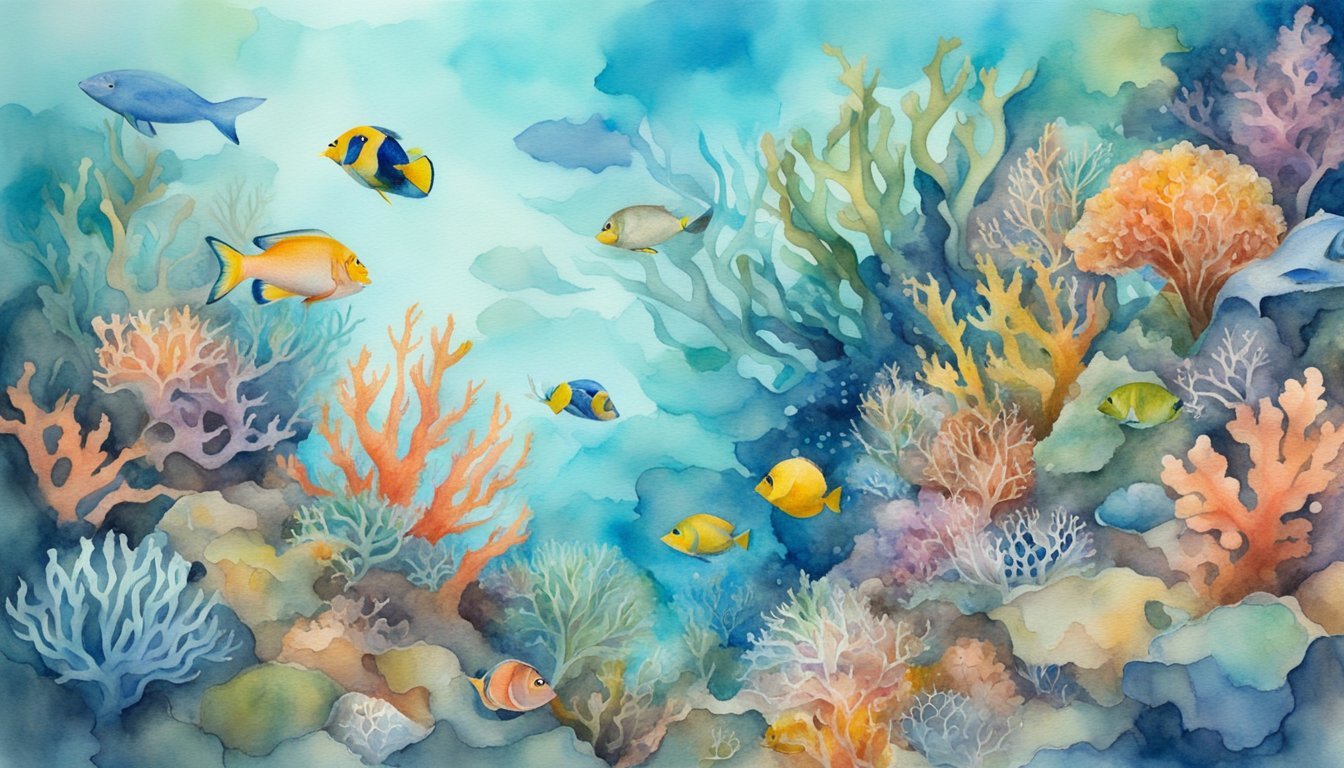Pioneering Discoveries in the Ocean Depths
The ocean depths hold a treasure trove of biological and geological marvels that have reshaped our understanding of life on Earth. These advancements are made possible through a synergy of exploration and technology.
The Wonders of Deep-Sea Biodiversity
Uncovering the vast array of species adapted to extreme ocean conditions, deep-sea expeditions have documented incredible life forms. The presence of deep-sea corals, forming intricate structures on seamounts, provides crucial habitats for various marine life. Bioluminescence adds an otherworldly glow to the ocean’s depths, where light is scarce. Creatures such as the bioluminescent shark and the eerie anglerfish illuminate their way through the abyss.
Some of the deep sea animals, like the gelatinous siphonophore or the undulating jellies, showcase the unique adaptations necessary for survival in such a hostile environment. Dumbo octopuses, named for their ear-like fins, are a testament to the whimsical forms life can take, while bizarre glass sponges demonstrate the sheer beauty hidden beneath the waves.
Revolutionizing Exploration With Cutting-Edge Technology
Advancements in technology, like the use of multibeam sonar, have enabled explorers to map the seafloor in unprecedented detail, revealing features like hydrothermal vent fields. These vents spew mineral-rich water, supporting complex ecosystems teeming with specialized species like tube worms and squat lobsters.
Exploring these environments has also raised questions about the impacts of human activity, such as deep-sea mining and its potential effects on these fragile ecosystems. The balance between ongoing exploration and conservation efforts continues to shape our approach to the ocean’s depths.
Discoveries of communities clustered around hydrothermal vents demonstrate how life can thrive without sunlight, altering theories about where and how life can exist. Instruments like remotely operated vehicles (ROVs) have brought back images and samples from locales previously thought unreachable, sharing a glimpse of the strange invertebrates, curious crustaceans, and even the soft, spongy beds that lay on the ocean’s floor.
Through these discoveries and advancements, our knowledge of the oceanic world expands, revealing more about our planet’s biodiversity and the interconnectedness of life. Engaging in this continuous journey of exploration allows for a greater appreciation and understanding of Earth’s final frontier – the deep sea.
Impact of Human Activity on Marine Ecosystems

Human activities are significantly altering marine ecosystems, from the surface to the deep sea, impacting wildlife habitats and contributing to climate change. These actions range from greenhouse gas emissions causing marine heat waves to plastic pollution threatening the health of marine life.
Challenges of Deep-Sea Conservation
The deep ocean is one of the least explored and understood regions on Earth, yet human activities are reaching even into these remote depths. Key habitats like the methane seeps and cold-water coral reefs of the Gulf of Mexico are at risk from energy exploration and deep-sea mining. NOAA Ocean Exploration initiatives help to understand the complexities of deep-sea ecosystems, including the largely unexplored habitats that are critical to maintaining the ocean’s health. Conserving these environments is complicated by their inaccessibility and the limited public awareness of their existence.
To safeguard these habitats, marine protected areas have been established, yet enforcement remains a challenge. Advances in ocean mapping and seafloor mapping are revealing new features and species, which in turn guide conservation efforts. However, these efforts are often hampered by insufficient funding and political support.
The Role of Science and Technology in Ocean Preservation
Science and technology are at the forefront of ocean conservation. Through the use of remotely operated vehicles (ROVs) and autonomous underwater vehicles (AUVs), researchers can study the ocean without disturbing its natural state. This technology provides critical data on the impacts of human-caused climate change and assists in monitoring the health of marine ecosystems.
The integration of genetics into conservation strategies helps understand the resilience of marine species to environmental changes and human impacts. Initiatives by organizations like Ocean Conservancy focus on reducing plastic pollution, which poses a grave threat to marine wildlife. By working to enhance legal regulations and raise public awareness, they aim to mitigate the detrimental effects of human activity on the oceans.
By addressing these pressing issues, researchers and conservationists hope to maintain the ocean’s diversity for future generations. These efforts underscore the important relationship between humanity and the sea, and the continued necessity for responsible stewardship of this global resource.

